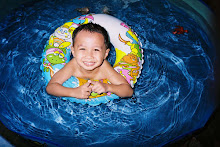
Walkie talkie two way radios have been around since Motorola built a large, cumbersome hand-held portable two-way radio for US soldiers to use during World War II.
The original military walkie talkie was a breakthrough for its day, because it meant that any soldier could pick it up and use it, and unlike other military radios, this one could be carried easily. The batteries were built-in, and the telescopic antenna could easily be collapsed for transport. So it was very quick to get the radio set going, and it could be operated just about anywhere – even while a soldier was walking. And that’s where the nickname ‘walkie talkie’ came into being.
That first handheld US Army walkie talkie had only one channel, and despite its chunky size and low power transmission strength, it was powered by valves – as all radio equipment was back in those days. The transistor had already been discovered back then but wouldn’t go into production for several more years.
By the 1960s transistors were becoming commonplace and simple silicon chips were coming into use as well. This was a perfect time to introduce walkie talkie CB radios to the American public. These low-powered CB radios were licensed by the FCC as Part-15 radio appliances.
These 27 MHz walkie talkie two way radios were limited to a few hundred milliwatts of power, and by law they could only have a small antenna. This meant they could only be used over short distances, but they proved to be very popular nonetheless.
For the first time, these small cheap 27 Mhz handheld CB radio transceivers could be carried by campers, hunters, fishermen and other sportsmen and hobbyists.
Soon they would be replaced by VHF and even UHF two-way radios, which also worked mostly line-of-sight but had an FM signal for better sound clarity. FM became the normal mode for business radios and for police and public service band radios in mobile, base and handheld walkie talkies as well.
ABOUT AMATEUR RADIO
Amateur radio service is defined in the Communication and Multimedia (Spectrum) Regulations 2000 as a radiocommunications service (covering both terrestrial and satellite) in which a station is used for the purpose of self traning, intercommunication and technical investigations carried out by authorized persons who are interested in radio technique solely with a personal aim and without any pecuniary interest.
AMATEUR RADIO OPERATOR'S CERTIFICATE
Regulation 27(1) of the Communications and Multimedia (Technical Standards) Regulations 2000 states that no person shall undertake or conduct any activity in designated skil area unless that person is certified. Amateur radio operator has been gazetted as a designated skill area category under the regulation, hence to operate an amateur radio station a person needs to have an appropriate proficiency and skill i.e. certified in this area.
INTERFERENCE
Please ensure that the radio transmision does not cause interference to any other radio services. Regulation 15(1) of the Communications and Multemedia (Technical Standards) Regulations 2000 states that no person shall intentionally design, install, operate, maintain or modify any communications equipment in a manner is likely to cause interference with, impairment, mulfunction of, or harm to any communications equipment or any other equipment.
Regulation 15(2) of the regulation denotes that a person who contravenes this regulation commits an offence and shall, on conviction, be liable to a fine not exceeding three hundred thousand ringgit (RM 300,000.00) or to imprisonment for a term of not exceeding three years or to both.
To eliminate the potential of interferences, the following procedures must be followed strictly:-
a) Ensure that suffient equipment, tools and test gear is available and can used to monitor and verify that your transmission does not cause any interference to other radio services.
b) You must responsible if your amateur radio is found to be the caused of interference. Immediate remedy action must be taken to rectify the problems in case of interference.
c) Ensure that the transmission do not exceed the level of over deviation.
d) Ensure that the radiated energy is always within the narrowest posible frequency bands for any class of emission in use.
e) The radiation of harmonics and spurious emissions should be suppressed to minimize interference.
Historical Description of Amateur Radio: From the Encyclopedia Britannica:-
Interest in amateur radio arose around the turn of the century, shortly after the Italian inventor Guglielmo Marconi successfully sent the first transatlantic wireless signal in 1901. The interference of amateur broadcasts with commercial and military transmissions led to the institution of government control in 1911. After World War I, amateurs became active in radio experimentation, contributing to developments in long-distance broadcasting and becoming the first radio operators successfully to exploit the upper medium-frequency and lower high-frequency radio bands. Over the years, amateur radio operators have also provided emergency communications during forest fires, floods, hurricanes, and other disasters. They serve as an important link between stricken communities and the outside world until normal communications are reestablished.Amateur radio operators in the United States are subject to international and federal regulations. There are five classes of licenses. Competence in the use of the International Morse Code and a knowledge of radio theory and regulation are required to obtain the advanced-level licenses. Amateur radio is allocated frequencies at the extreme high-frequency end of the medium-wave band, five groups of frequencies in the shortwave band, two groups in the veryhigh-frequency band, three in the ultrahigh-frequency band, and seven in the superhigh-frequency band for telegraphic and telephonic communication using amplitude and frequency modulation. There are restrictions on the power of the transmitters, and certain of the frequencies must be shared with due regard for the needs of other users.
 Walkie talkie two way radios have been around since Motorola built a large, cumbersome hand-held portable two-way radio for US soldiers to use during World War II.
Walkie talkie two way radios have been around since Motorola built a large, cumbersome hand-held portable two-way radio for US soldiers to use during World War II.

















































0 comments:
Post a Comment